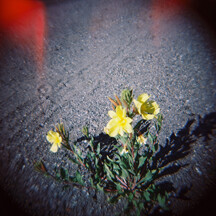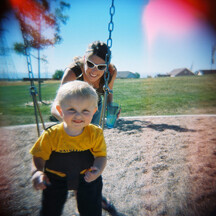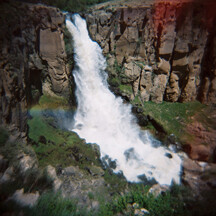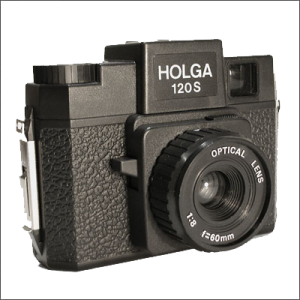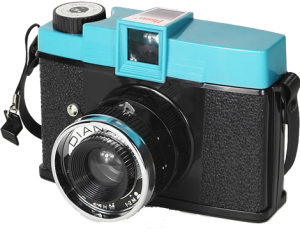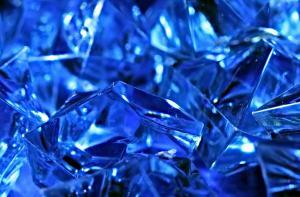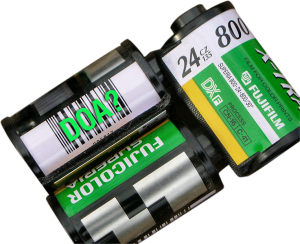Thanks for joining me again in our journey of toy cameras. I am going to answer the question: What are the different options once you have a exposed roll from your toy camera? Due to the fact that these toy cameras use either 120 film or a different aspect ratio on 35mm film you need to find a lab that can process Diana or Holga films, as your neighborhood 1 hour photo lab usually can’t. Which is why I am going to encourage you all to send your film to Reed Art & Imaging, because, well, this is a blog for Reed Art & Imaging. There are several toy camera enthusiasts working here and we take great pride in giving you the best from your toy cameras.
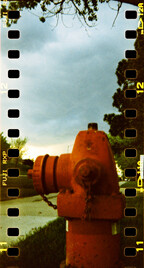
There are 3 types of film you can use in a toy camera, E-6 slide film, C-41 color negative film, or B&W negative film. If you are using either C-41 or E-6 these can also be artistically enhanced through a technique called: cross-processing. To cross-process you would process your C-41 negative film thru E-6 chemistry to get a slide or vice verse, E-6 slide film thru C-41 chemistry to get a negative. It is the chemistry that determines if the final film is a negative or a slide – not the film. This is a fun experiment I would encourage you to try as it causes an increase in contrast as well as unnatural colors. Check out the samples at the end of this article.
Whether cross processing or using normal film developing services, once the film gets processed there are a few options you have to choose from: There are proof prints, scans or contacts. With E-6 film it is already a positive, so you can’t contact them, however you can proof or scan them. I personally like to do small scans, usually 6mb, so that I can post them on facebook, my website and use them for editing. Several people choose to get proof prints, either 5×5 or 4×6 depending on the format of the mask you use. If you choose proof prints there is also an option to get a CD as well.
You may be asking yourself, “How do I know which type of film to use?”. This can be a difficult decision, but I will try to make it a little easier for you. I usually do not recommend using E-6 film, unless you are planning to cross-process. E-6 film is very sensitive and if your exposures are not accurate the images will be too light or dark, because of the limited control in your toy camera it is difficult to get the perfect exposure. C-41 color negative film or B&W negative film have more range in their exposures. With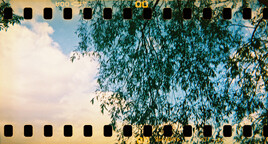 either you can be over- or under-exposed by almost a stop and still get usable images. With most toy cameras it is best to use a 400 ISO speed film. However, I would recommend experimenting for yourself. Just go out and have fun!
either you can be over- or under-exposed by almost a stop and still get usable images. With most toy cameras it is best to use a 400 ISO speed film. However, I would recommend experimenting for yourself. Just go out and have fun!
Next week I’m going to lighten it up a bit and let you know about some of the adventures in shooting I have had. Leave any comments or questions for me below. See you soon!
Above images taken with Fuji E-6 film and cross processed in C-41 chemistry.

